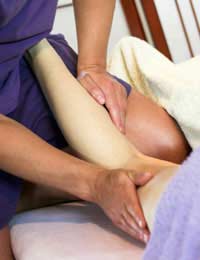Common Running Injuries

Everyone who regularly pulls on a pair of running shoes will at some point experience some pain or strain associated with the activity. As with all sports, these can range from simple aches from exertion, to inflammation and stress damage due to overwork or poor posture.
The vast majority of injuries sustained by runners, not unnaturally, occur in the lower half of the body, from the toes right up to the hips and lower back. A common complaint is a stress fracture to the foot, involving a break in one of the many bones to be found there because of the pounding that can result from repetitive impact with hard surfaces. Anyone who follows football will be familiar with the term metatarsal because of the number of high-profile players who have suffered an injury to one of these bones, but you don’t have to be earning £100,000 per week to be vulnerable to injury in this area. The feet can also suffer damage to the tissue along the base, sometimes referred to as the plantar fasciitis. If microscopic tears do occur, recovery time can be anything from weeks to months.
Achilles Tendon
The area of the Achilles tendon, which connects the calf muscle to the heel bone, is another common area of sporting injury. Again it can be debilitating over a long period if prompt action is not taken. Straining or tearing to the calf muscle, otherwise known as the gastrocnemius, can start with a twinge and develop rapidly while another football related term, shin splints, affects the front part of the leg. The latter is the result of the tearing of the muscles from the tibia bone.Moving up the leg we come to the thighs, which can incur trauma in two main areas – to the hamstrings, and the outer thigh, an injury often referred to as ITB or iliotibial band syndrome. Straining or pulling of the hamstring may produce soreness or stiffening to a greater or lesser extent. More serious damage in the form of a tear is never difficult to diagnose as it will be impossible to place the leg on the floor and the area will exhibit bruising.
The Sciatic Nerve
ITB can often be felt when pushing the leg sideways from the hip, and again ranges in intensity depending on the amount of damage, and how far down the leg it extends.From the lower back, the sciatic nerve extends down through the buttocks and the back of the legs, and quickly sends very clear signals from single or multiple sites along its path when stresses or strains are impeding its ability to function properly.Finally to that most infamous of injuries, runner’s knee, cause by the knee cap rubbing against the cartilage. The more squeamish may not want to know that an indication of the condition is an audible crunch or click when the joint is manipulated. In terms of pain, this is the easiest injury to self-diagnose, as many a runner will testify to.
All this is not to suggest that anyone thinking of taking up the sport is leaving themselves open to serious injury; simply that it is important to become aware of your body and how exercise impacts upon it.


Re: The Women's Running Network
Do you have a club in the Swansea area?
Re: The Women's Running Network
Do you have any clubs in the Swansea area?
Re: The Women's Running Network
Hello, do you currently have any groups in Torbay? Many thanks.
Re: The Women's Running Network
Hello Is their a group in Whitstable or close by.
Re: The Women's Running Network
Hi is there a group near Eastbourne I’d like to start running with a group I am a beginner and have been trying to run on my own
Re: The Women's Running Network
Hello, I'm looking for a supportive running group in Crawley, west ex for women.. I've been running for less than a year, started…
Re: The Women's Running Network
Hello, I'm looking for a running group in Exeter that I may be able to join in with. Daytime is also possible. Have done a bit of…
Re: The Women's Running Network
Please “were do you run from I am 47 and want to start running I work Thursday Friday a sat I need to get motivated again and so…
Re: The Women's Running Network
Is there a women’s running club in or near Cardiff- beginners level.
Re: The Women's Running Network
Hi, I prefer running with others. Please could you let me about any women's running clubs in and around Lancashire. Thank you Clare